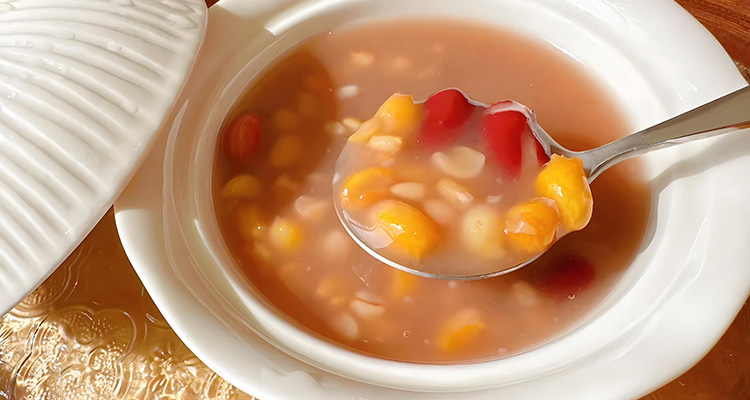Northeast Corn Porridge: Warm Traditional Breakfast
Introduction: A Taste of Northeastern China
Northeast Corn Porridge, known as “Dà Chà Zi Zhōu” in Chinese, is a beloved traditional breakfast in northern China. This rustic, hearty porridge is made from coarse cornmeal and other grains, offering warmth on cold winter mornings. Its simple ingredients and long history reflect the practical and welcoming spirit of Northeastern people. Enjoy it hot with pickled vegetables or fermented tofu for an authentic taste.
1. Origins and Cultural Significance
Northeast Corn Porridge has roots in rural Northern China and has been eaten for centuries. Farmers and laborers prepared it to stay nourished during harsh winters. The coarse grains, such as cornmeal, barley, and millet, provided energy and sustenance. Over time, it became a symbol of family, hospitality, and local tradition. Sharing a bowl signifies care and warmth, making it a window into Northeastern Chinese culture.
In Northeastern homes, this porridge often represents the “taste of home.” Visitors are welcomed with it, showing generosity and friendliness. This simple, hearty dish reflects the straightforward and robust character of local people.

2. Ingredients and Preparation
Key Ingredients:
- Coarse cornmeal
- Red beans
- Green beans
- Millet
- Barley
These grains are nutritious, high in fiber, and naturally flavorful. Some variations may include a bit of sugar or honey for sweetness. The traditional method involves soaking cornmeal overnight, then simmering it slowly with water for 1-2 hours. Stirring occasionally ensures a creamy texture and prevents sticking. For extra flavor, some cook it over a wood fire.
Cooking Steps at Home:
- Soak cornmeal overnight.
- Combine soaked grains with fresh water.
- Simmer over low heat for 1-2 hours.
- Stir occasionally until soft and creamy.
- Add sweeteners or serve with pickled vegetables for a savory touch.
This home method captures the rustic charm and hearty flavor of authentic Northeast Corn Porridge.

3. Flavor, Serving, and Where to Enjoy
The porridge has a creamy, slightly sweet taste, with soft yet textured grains. It warms the stomach, making it perfect for cold mornings. Traditional accompaniments include:
- Pickled vegetables
- Fermented tofu
- Steamed buns
- Boiled eggs
Eating with small side dishes balances flavor and nutrition, demonstrating the wisdom of Northeastern coarse grain cooking.
Travelers can try this porridge in cities like Harbin, Shenyang, and Changchun. Breakfast stalls, family-style restaurants, and local markets offer bowls for just 10-20 RMB. Ask for “Dà Chà Zi Zhōu” and enjoy a steaming bowl, full of culture and warmth.
Nutritional Benefits:
Northeast Corn Porridge provides complex carbs for lasting energy, fiber from grains for digestion, and protein from beans. It is naturally low in fat and highly customizable. This makes it a nutritious breakfast option for locals and visitors alike.
Tips for Tourists
- Best enjoyed hot in the morning, especially in winter.
- Pair with other Northeast snacks like buns or pancakes.
- Try both sweet and savory versions for variety.
- The English translation is “Northeast Corn Porridge.”
Experience the Tradition
This porridge is more than food—it’s a cultural experience. Making it at home or tasting it in China connects you to centuries of Northeastern tradition. Its hearty grains and comforting warmth make it a must-try for any traveler exploring Northern China.


